Tree Size Matters: Why Planting Bigger is Not Better
Look at that little tree grow!
Planted when it was a mere twelve inches tall, the white oak in my front garden now towers well over twelve feet. That may seem puny for a canopy tree but it’s been only eight years since the Quercus alba sapling was gently placed in the ground. Considering how time has a sneaky way of moving forward, eight years is a blink—especially when anticipating the growth of a mighty oak.
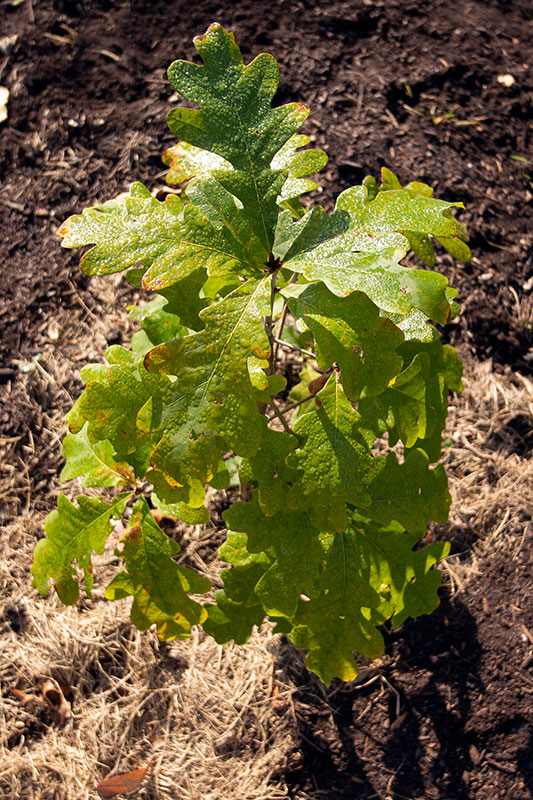

but shouldn't hurt the tree.
Trees in and around my neighborhood are being taken down seemingly daily. The constant roar of chainsaws tell me so. Perhaps the hapless trees are at the end of their lives, had sustained weather damage, or the owners have a low tolerance to perceived risk—or unbelievably—are fed up with the fallen leaves?
Whatever their reason, I also wonder if at least some residents are replacing what’s lost? If they knew how easy and inexpensive it was to plant a sapling—and how healthy it would grow—could they be motivated to get out there and get digging? Well, I’m here to be that enthusiastic motivator!
Cheap AND Easy
Indeed, planting a young seedling demands very little effort. Perhaps some turfgrass begs to be smothered or a few plants need to be relocated, but the planting hole itself need not be deep.
Plus, the cost of purchasing young one- to two-year-old trees, when evaluating the bang for the buck, is unbelievably low. Seedlings are an affordable way to fill a garden with a cornucopia of canopy and understory trees—and these little ones have the best shot at robust and stable growth. Why not get a new tree off to its best possible start?
Over the years Marc and I planted a variety of oaks, a bitternut hickory, a few wild black cherry trees, flowering dogwoods, eastern redcedars… all for very little money. $12 a tree, tops. Some trees, like the redcedars, were volunteers brought in by pooping birds (thanks, friends!). All the inexpensive little trees are doing very, very well. However, I can’t say the same for the large garden center trees we purchased.
Spinning the Broken Record: Why We Need Canopy Trees
You probably don’t need to be reminded of all the earth-saving benefits that canopy trees provide. But I’m compelled to mention a few anyway!
Trees clean our air, keep our shaded homes cool, and help lower the temperature of the planet itself. Their clusters of leaves act as windbreaks and dampen noise as well.
A tree’s canopy and roots—and their fallen leaves—slow down heavy rains and prevent erosion. Roots and leaves also filter contaminants, purifying the water we drink and play in.
Amazingly, our time spent among trees has been scientifically proven to relieve our stress. And when trees exist in right-of-ways or surrounding homes, these areas were found to have lower crime rates than other communities without them.
But most importantly, trees sustain the life of so many wild critters that are near and dear to many of us. I couldn’t imagine living in a space where our trees and animals friends were absent. Could you?



A side note: The brilliant wild bee nerds (I’m looking at you, Sam Droege) would want me to mention that we also need meadows to support all the teeny animals that these distinct habitats attract. So, if you can grow areas of trees and shrubs AND also make room for locally native flowering plants and grasses, you’ll surely maximize the stewardship of your property.
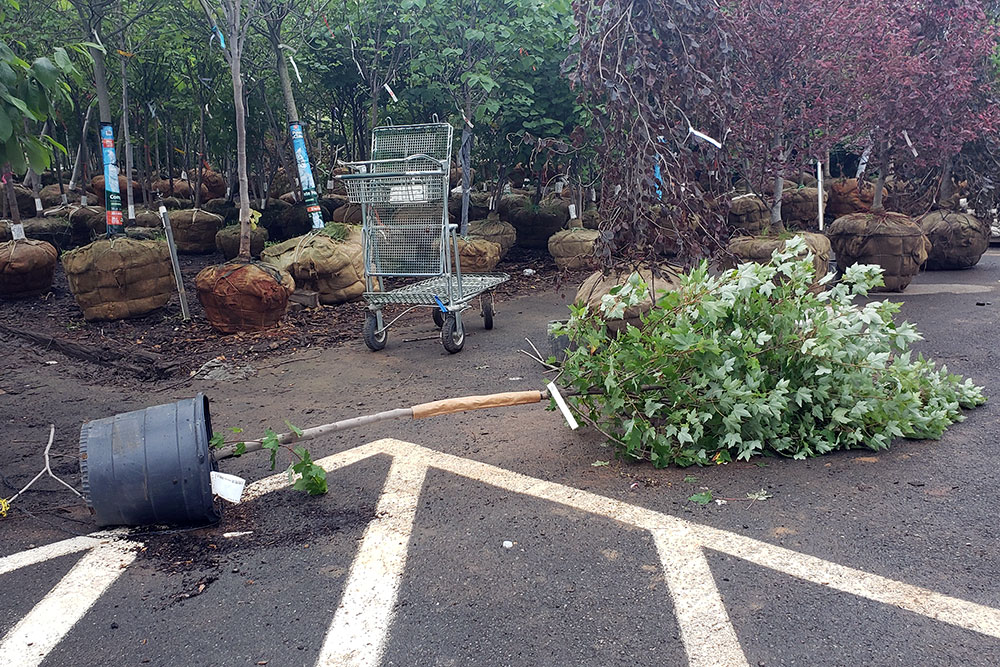
WTH, Nursery Industry?
I’ve come to the realization from all my early gardening days that the nursery trade offers consumers inferior tree stock. Yup, there it is, what you might consider the anecdotal truth about the industry. But many, much smarter people have come to this same conclusion. In fact, for decades, landscape professionals, arborists and academics have been vocal about the trade’s poor practices and much has been written by researchers about this very topic.
Large caliper trees—those with a 1-inch diameter or greater—have issues that often begin early on in production, are exacerbated throughout transit and persist on the purchaser’s property. These growing and handling practices give rise to trees that are often destined to fail. The popular demand for these mass-produced trees further fuels the industry and its mediocrity.
Studies show that nursery-grown trees, whether balled and burlapped (B&B) or containerized, inherently possess liabilities; predominantly hidden defects that end up being a time and money sink for us consumers.
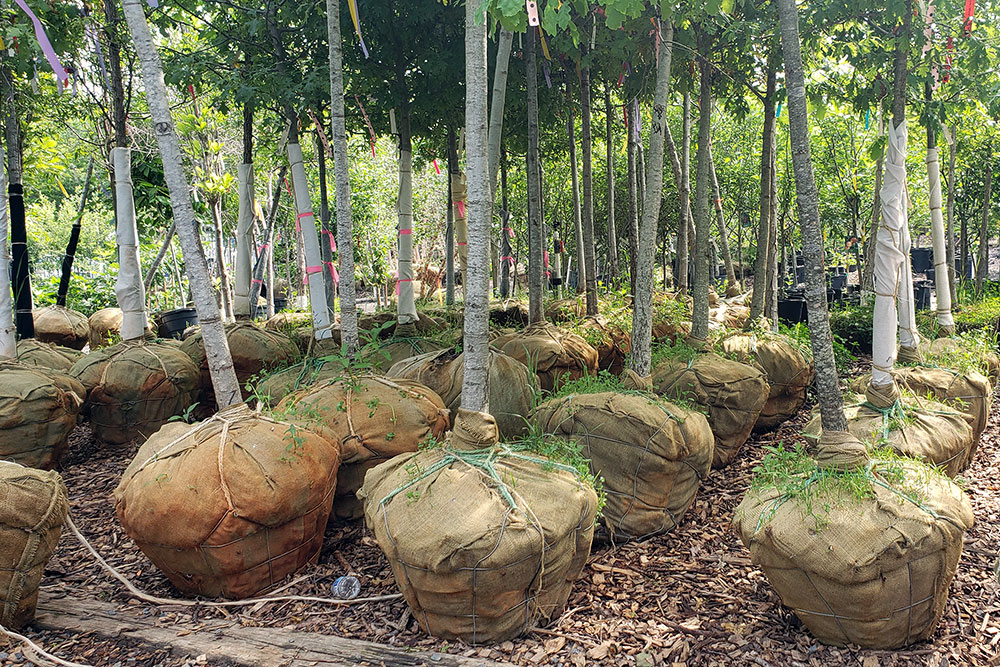
Here's what's wrong:
1. Buried root flare.
In a field nursery, where larger trees are grown on open land, soil is often piled up high over the tree’s roots and against the tree’s trunk, resulting in a covered root flare (also known as a root collar). Secondary roots, which do not uptake nutrients and are not a strong support for the tree, sprout in this soil above the root flare. Meanwhile, the main roots of the tree can die. Removing the excess soil down to the root flare and severing the secondary roots are necessary actions prior to planting.
2. Pruning of live tissue.
Trees in the nursery trade are limbed up to facilitate easier management in the field and in transport once the plant is dug. As I’ve written previously when I killed a tree, young trees are healthier—and their trunks grow larger—with all their branches attached.
Without lower limbs (known as temporary branches), an exposed tree trunk is vulnerable to sun scald and frost cracks. It also makes it easier for deer to rut or rub their antlers and damage the tree’s protective bark. Wounds that can’t seal will invite disease and pests. Oftentimes, pruning lower limbs makes for a weak tree that needs to be staked.
Another poor practice is failing to cut at the all-important branch collar and leaving a branch stub. When a stub is left, the plant is not able to seal the wound. Again, an unsealed wound can end up with decay that spreads down into the tree’s trunk.
There are many other improper and outdated pruning methods inflicted routinely on woody plants. A young sapling that’s allowed to grow without harmful human interference is going to be given the best chance to develop into a resilient tree.
3. Brutal excavation of B&B trees.
Balled-and-burlapped (B&B) trees are typically grown and excavated in a field nursery. They are dug with heavy equipment (such as a tree spade) which mechanically severs the circumference of the trees’ roots, leaving most of the roots behind. Severed roots obviously pose a huge disadvantage to an extracted tree. B&B trees, depending on the species of tree, can also develop girdling roots that choke the tree to death. An excavated tree could take up to a decade to recover, if it survives the shock at all.
4. Poor root development & girdling.
If a large nursery-grown tree is in a container, the tree’s roots have most likely grown to circle the interior of the pot (this is called girdling). In some cases, there is a succession of girdling as the plant was transferred from a small pot to a larger one. It’s necessary to untangle and prune the ill-angled root growth. This task adds substantial time to the planting process and the tree’s recovery—and doesn’t guarantee success.
5. Container planting media is not optimal.
The industry uses a variety of lightweight, soilless material for good drainage as well as for easier and cheaper transporting. This growing media, if not removed prior to planting in native soil, can contribute to plant mortality because it’s not able to hold moisture, like say, the clay in your garden can.
At the root-soil interface, plant roots often struggle to grow from one type of substrate to another. This could occur with B&B trees as well. Root washing is often recommended and is yet another step to consider.
6. Poorly transported & handled stock.
Large nursery trees often incur injuries in transit. Root balls can be crushed when B&B trees are moved; tie-down straps, if not properly placed, can damage tree trunks; often the trunk sheath that affords protection is missing and so is the tarp used to protect the living cargo. Stacked in the bed of a truck, tree trunks and foliage are often open to damage.
7. Not much care goes into the final planting.
Consumers, landscapers, contractors and other workers wielding a shovel are not always knowledgeable about sound planting procedures. They regularly plant too deep, fail to expose the root collar, leave the B&B tree’s burlap and wire around the root ball, and place mulch too high and up against the trunk.
Trees planted with excess soil piled up over the root collar (see #1) are typically planted too deep in the landscape. A 2000 study by Smiley and Booth found that 93% of professionally planted trees are planted too deep. Other studies found that deep planting can predispose a tree to transplant failure and girdling root formation.
8. No locally sourced plant material.
Another point worth mentioning is that typical garden centers don’t sell locally sourced native tree species—the genetically appropriate plants found naturally growing in a particular region—often referred to as “local ecotype.” Additionally, selections that are offered are not native at all, they’re cultivars of straight species, or worse yet, they’re outright invasive (such as Norway maple and Bradford pear).
One great option is to seek out and purchase your trees from a restoration organization that grows saplings from regionally collected seed. Your local Native Plant Society chapter may also offer very young trees or can assist in finding them. Growing a tree yourself from a seed is also a smart alternative (more on that later).
Just as birds dropped the seeds of the beautiful Eastern redcedars (Juniperus virginiana) that now anchor the corner of my front garden, other wildlife and winds also frequently deposit other tree seeds. If you have a large enough space and the mature trees near you are in natural areas (primarily wild), you could choose to keep some of these sprouts. This is probably the simplest method of foresting your property!

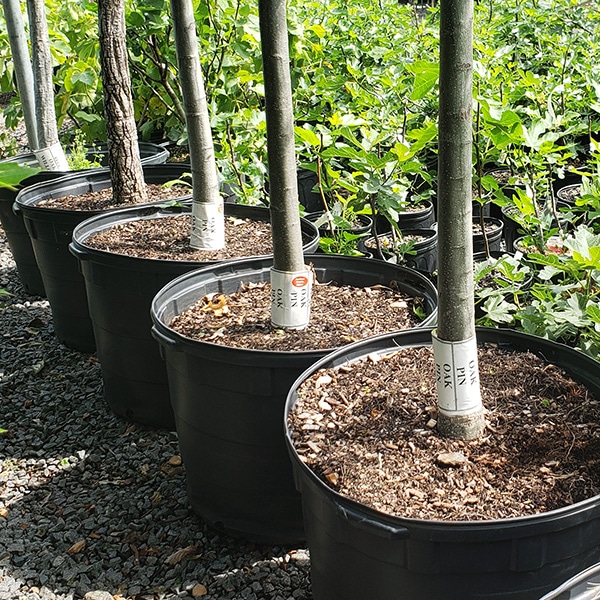


Sun scald, frost cracks and deer rubbing are prevalent on exposed tree trunks.

Saplings: Getting More Than What You Paid For
My nearby garden center, not surprisingly, neither sells bare root or potted saplings to consumers nor do they tout the importance of planting them. I suspect the same goes for most landscaping companies, too. They are all in it for a large profit, after all.
But very young trees skirt the long list of problems associated with the landscaping industry’s larger caliper trees. Let’s look at the reasons why planting an inexpensive whip of a tree is a wise decision.
Here's what's right:
- Saplings are affordable!
- Low-effort planting; do it yourself because it’s quick and easy
- A tiny planting hole means less disturbance to nearby established tree roots
- Virtually no root issues such as girdling or severing
- Able to develop a healthy root collar (with correct mulching)
- Growth can be equal to, or faster than, a large caliper tree
- Possible to find locally sourced (local ecotype) saplings; look to your regional restoration or non-profit organization
- Easy to start a tree from a seed yourself
- Environmentally greener: less weight and time in transport means lower greenhouse gases
- Opportunity to selectively prune young limbs for a healthy structure
- It’s simple and inexpensive to plant a future forest all at once or over time as the trees grow up together


It has a healthy root flare.
Make It an Oak
Dr. Douglas Tallamy has become a trusted voice for defenders of our natural world. He inspired us to leap feet first into the role of wildlife gardeners when, in 2007, his research on Lepidoptera (moth and butterfly) host plants was widely introduced in Bringing Nature Home.
His most recent writing project, The Nature of Oaks: The Rich Ecology of Our Most Essential Native Trees, presents fascinating month-by-month insights into our magnificent oaks. Tallamy encourages us to not only plant oak tree species (Quercus) but to also consider planting them when they’re very young: as an acorn or sapling.

Why oaks, you might ask? Because oak leaves are eaten by more very hungry caterpillar species than any other plant, and that puts this keystone species at the tip top of the ecologically awesome list. “No other tree genus supports so much life,” Tallamy writes. In the Mid-Atlantic, 557 caterpillar species are supported by oaks. Our native tulip tree (Liriodendron tulipifera), by comparison, supports just 19 types of native caterpillars.
And although all of our native plants have an ecological role to play, you can see they are not all the powerhouses that our oaks are. As a matter of fact, only a few plant genera produce roughly 75% of the food needed to sustain populations of insects and ultimately other animals such as birds, amphibians, reptiles and mammals.
Even if dozens of native plant genera are present, Tallamy argues, “a yard without keystone plants will fall far short of the insect abundance necessary to sustain viable food webs.”

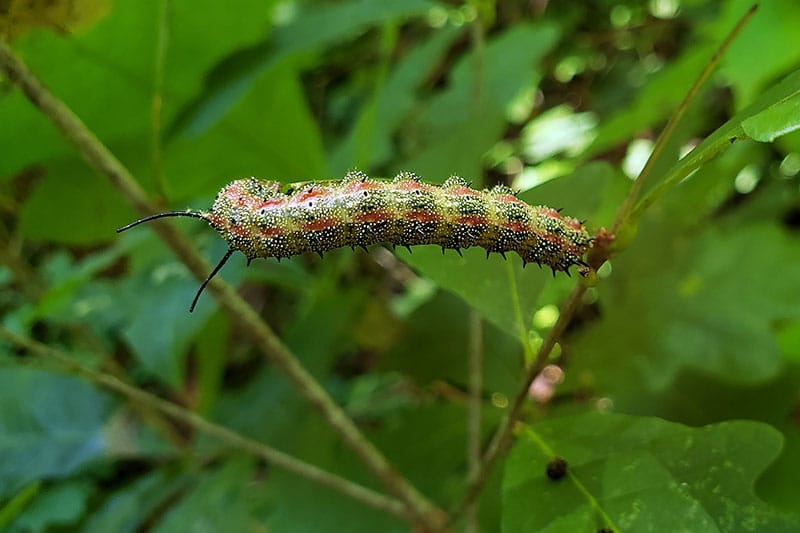
An Oak's Growth
Is it true that oaks grow at a glacial pace? The short answer: Nah.
The general perception that oaks are slow growers, Tallamy explains, is because in the first few years, more is going on below ground than above. “In fact, after their first year, a seedling oak may have up to 10 times more root mass than the biomass of leaves and shoots above the ground.”
As oaks continue to mature, the root systems that they develop over their lifetimes help make them champions when it comes to environmental services such as soil stabilization, carbon sequestration, and watershed management.
Plant an Acorn and Watch It Grow
A long-time proponent of acorn propagation, Tallamy has encouraged homeowners to collect and grow these beautiful oak fruits due to their affordability (free) and their propensity to evolve into long-lived trees. He’s planted acorns himself. “You don’t have to have a green thumb to grow an oak and you will get a larger, healthier tree than if you buy an expensive one in the nursery.”
And there are many types of oaks, from both the red and white group, to choose from. In some of the Mid-Atlantic states, for instance, New Jersey reports 19, Maryland 21 and Virginia 28 native oak species. With so many possibilities, there’s a regional oak out there that will fit your site’s conditions.
If the news of oak wilt, sudden oak death, bacterial leaf scorch and the like have you ruling out oaks as your new family members, please don’t let it. Tallamy recommends planting a variety of oak types, regardless of disease and pest reports, to help develop resistance.
Leaves, Glorious Leaves!
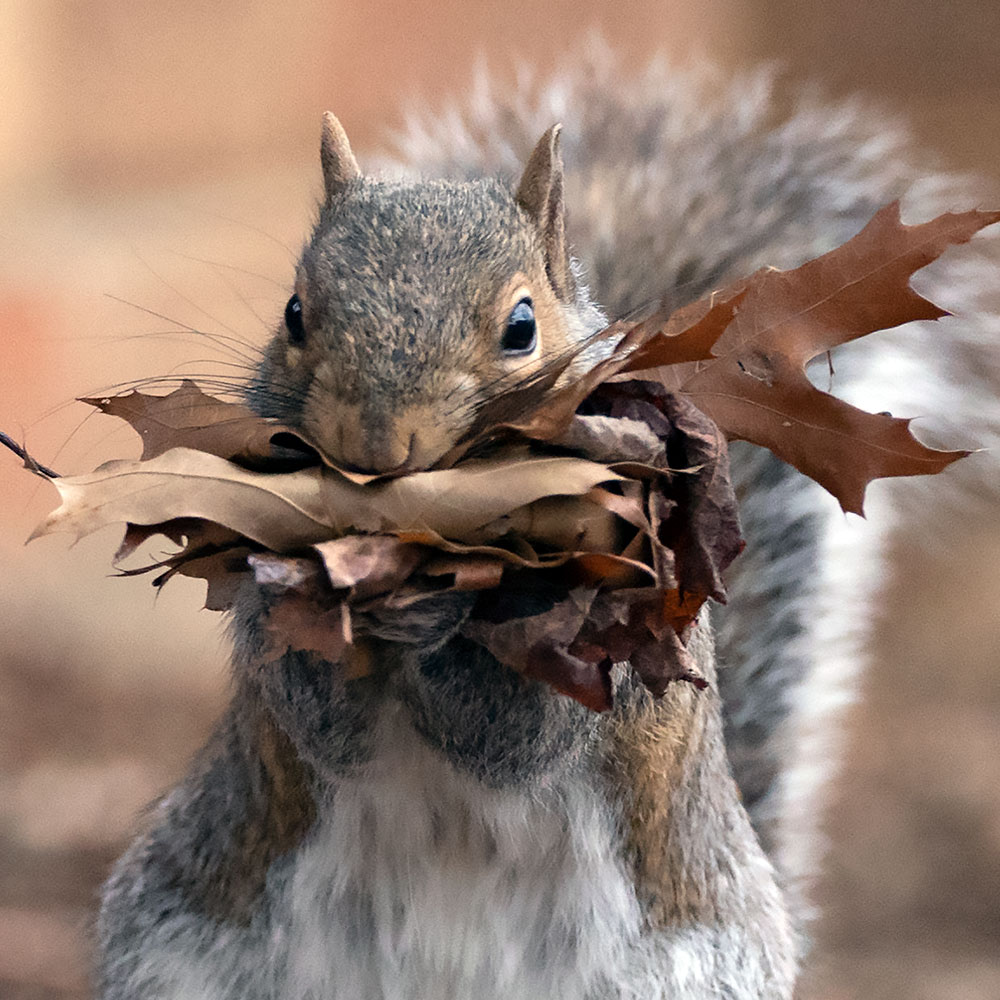
I’m always hesitant to use the term “leaf litter” because really, should our gardens’ fallen leaves be considered trash? I think not! Leaves, especially those of our dear oaks, provide innumerable ecological services.
Tallamy tells us that oak leaves are loaded with lignins and tannins that retard breakdown. They can take up to three years to decompose. Their gradual decay, combined with the yearly replenishment of autumn leaves, provides food, shelter and the humid conditions required by vital decomposers such as bacteria and fungi, and animals like moths and spiders.
Decaying leaves naturally impart nutrients to the soil that feed the trees themselves. I like to run around shouting, “Woodland trees need woodland conditions!” Fallen oak leaves also suppress invasive plants like Japanese stiltgrass, an annual grass that reseeds prolifically and radically alters native plant communities.
In urban and suburban areas, where finding solutions to stormwater runoff is a priority, layers of oak leaves can mitigate flooding. “The thick mat of leaf litter that characterizes forests with numerous oaks acts like a sponge when it rains and is most valuable when it rains hard,” Tallamy explains. This infiltration and subsequent slow release assists in the recharging of essential groundwater. Layers of leaves also filter man-made contaminates.


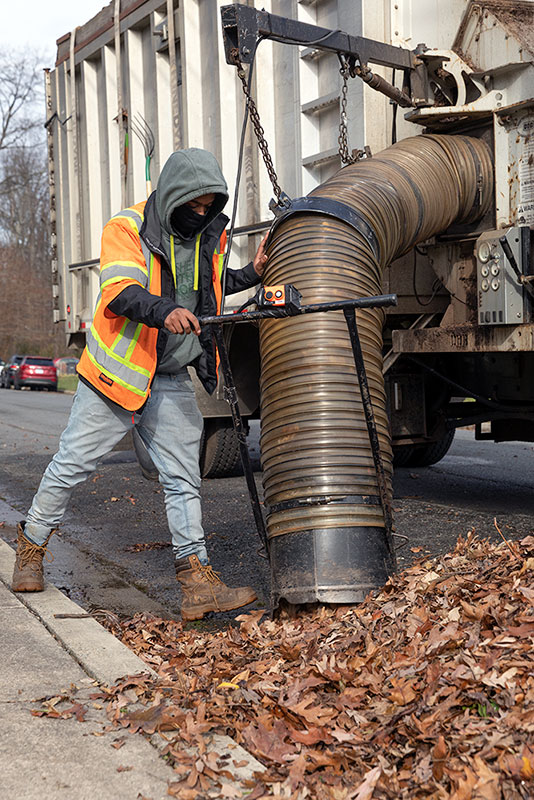
Let's Grow a Forest
Each year, surely you’ve noticed, we experience more frequent and extreme weather events. These periods of drought, excessive heat and wild atmospheric episodes can be detrimental to a tree, especially one residing in harsh, unnatural conditions, like a typical residential property.
So, instead of having just one tree out there, fending for itself, what we should be doing is planting multiple trees. And in a tight grouping at that.
Trees are pack animals. They do better when planted alongside other trees. Through complex root systems, the same tree species can share nutrients and resources with each other; they communicate through symbiotic mycorrhizal fungi. Trees help each other to survive.
Remember that the majority of a tree’s roots are in the upper foot of soil and can spread three to five times beyond their dripline. Lateral roots reach out, interlock and graft together with their neighbor’s, and create a substantial anchor for the trees. Planting a grouping of three, say, white oaks (or whatever locally native oak best matches your site’s conditions) will build a solid network of roots that can result in better stability and longevity for each tree.
Final Bits
Native trees (and shrubs, too) are low maintenance plants for garden enthusiasts and non-gardeners alike. They do not need chemical inputs such as fertilizers or pesticides. As trees and shrubs mature, lawn is shaded and dies; shade, along with layers of fallen leaves, is a natural way to reduce lawn over time.
Trees that are planted as seeds or seedlings are not impervious to visible root-growth problems so definitely monitor them through the years. Also evaluate their branching structure and prune judiciously, if at all. The internet provides a lot of information on pruning young trees for structure. As always, do some research and use trusted sources (and ultimately your best judgement). Also reach out to an International Society of Arboriculture (ISA) certified arborist—NOT a tree removal company—if needed.
Have deer? It will be necessary to protect your saplings if you have deer living in your neighborhood, like I do. I build wide and tall cages out of 14-gauge galvanized steel welded wire garden fencing and 3-4 rebar stakes and keep them in place until the trees grow higher than the deer can browse. Tree trunks should continue to be protected in subsequent years from rutting or rubbing.
Residential property owners are uniquely positioned to help our mother earth. We can use our powers for good by planting oaks and other native trees—easily and inexpensively. In no time at all those little trees will be providing endless rewards.
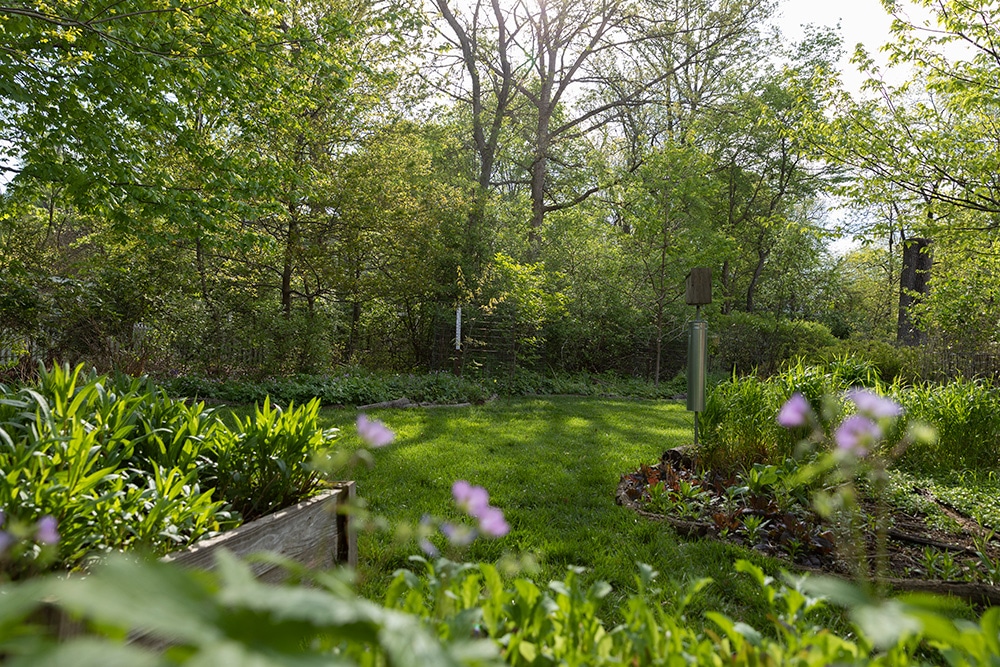
Fortunately, our neighbors across the creek have two beautiful oak trees that are doing well. Meanwhile, the native trees
and shrubs we've planted are growing and filling in, inviting critters large and small to visit.
You can read more about Doug Tallamy’s The Nature of Oaks in this New York Times article.
Garden Design’s article Planting Oaks: Doug Tallamy shares how you can plant an oak tree.
